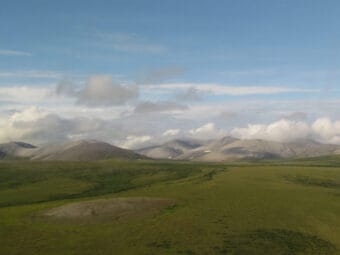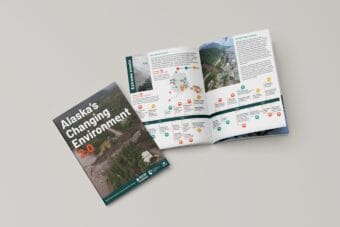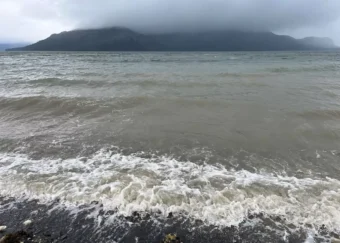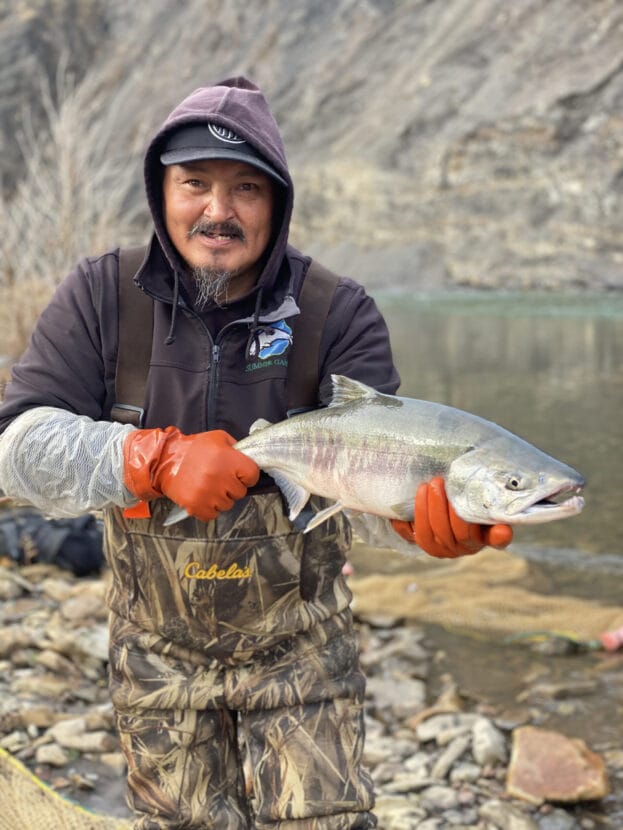
Johnnie Storr grew up fishing with his dad in the hamlet of Aklavik, a small town on the Mackenzie River Delta in Canada’s Northwest Territories. Depending on the season, they looked for Arctic char, Dolly Varden or whitefish.
“We fished for char in the fall time,” Storr said. “Soon as there was enough ice, we walked out and set nets for whitefish.”
Storr is Inuvialuit and Gwich’in, and heads the local Hunters and Trappers Committee, which helps manage Indigenous hunting rights in the region. He said elders say chum salmon have always lived in small numbers in the Mackenzie River, but in the last decade there has been a clear uptick.
“I think it was 2019 where we have seen a big jump,” he said. “I think we had at least 300 salmon brought into the Hunters and Trappers Committee.”
In recent years, all five salmon species have shown up in rivers from northeast Alaska to Nunavut, in Canada’s eastern Arctic. Chum salmon, one of the most cold-tolerant salmon species, are the most commonly found.
Storr said some people eat them, but personally he doesn’t prefer salmon.
“We were releasing them just because we really prefer char around here,” he said.
A research collaboration between local Indigenous fishers, Fisheries and Oceans Canada and the University of Alaska Fairbanks is investigating this jump in salmon in the Canadian Arctic. A study published last week found climate change-driven ocean warming is at the center of the shift.
For salmon to make it all the way from the Bering Sea to the Canadian Arctic, ocean conditions need to be just right, said Joe Langan, a postdoctoral fellow at UAF who co-authored the study.
“We call it a two-part mechanism. You need warm conditions in the late spring Chukchi Sea … we think that salmon are following that north,” Langan said. “And then if the Beaufort [Sea] clears of ice and warms up as well, it kind of opens the door for them.

Langan said the longer this Arctic ocean corridor remains warm and ice free, the more salmon make it to western Canadian Arctic rivers.
Human-caused climate warming is rapidly transforming the Arctic — sea ice is declining, water temperatures are higher and summers are longer, said Karen Dunmall, a research scientist with Fisheries and Oceans Canada.
“The salmon are really one of the tangible examples of this change,” she said. “They are showing up because the environment is changing.”
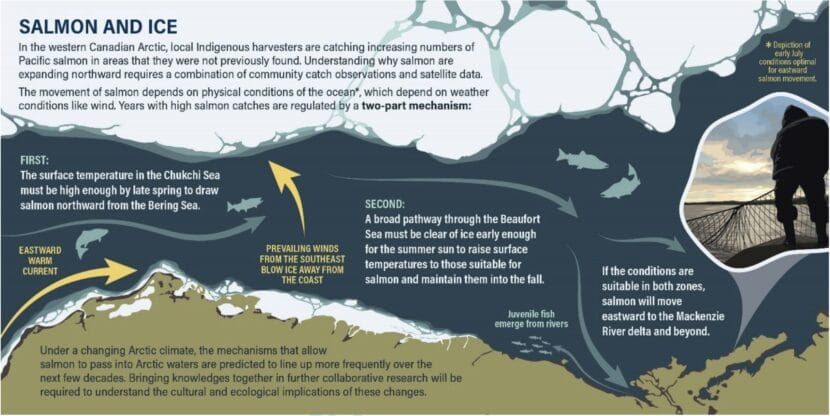
Dunmall has worked with Arctic communities to study the impacts of climate change on fisheries for more than two decades. Local fishers offer samples from salmon they catch and their questions drive her research: Where are these new salmon coming from? And will they disrupt the local ecology?
Salmon are born in rivers, spend their adult lives in the ocean, and generally are known to return to their home rivers to spawn and die. Dunmall said the increasing abundance of salmon in the Arctic means that some of these newcomer fish probably originated somewhere else.
“The fact that they’re showing up in the Canadian Arctic in rivers suggests that they may not be able to go back to their natal streams if they get so far north,” she said. “They just follow the urge to spawn and try to find something that might be suitable.”
In recent decades, Western Alaska has seen record low chum runs. Scientists say the decline is at least in part due to marine heat waves and warming rivers.
Could Alaska chums be heading north?
“It’s likely in part some of the same fish,” said Curry Cunningham, a UAF fisheries ecologist who contributed to the study. He said it’s possible that some of these salmon are finding more suitable habitat further north.
“As we see warmer temperatures in the Arctic, there’s at least access for these chum to be moving further north and the potential that some of the freshwater habitats may be becoming more conducive,” Cunningham said.
Dunmall said her team is working on genetic studies of the fish to try to nail down whether they’re the same ones missing from Alaska.
But the new Arctic salmon aren’t exactly a welcome addition in Canada. Storr, in Aklavik, said there’s concern they could be encroaching on the spawning habitats of char and Dolly Varden. And he worries the local fish could be susceptible to unfamiliar salmon parasites.
Storr knows that 300 miles south, families along the Yukon River have been hurting, going many years without a normal salmon harvest.
“If there was a way we could send them back, we would send them back,” Storr said.

